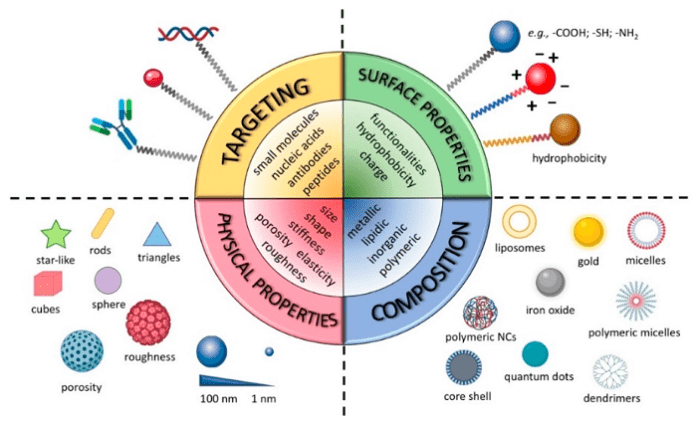Introduction:
The development of nanotechnology has revolutionized the field of medicine in recent years. Nanomedicine is a promising approach that uses nanoscale materials for the diagnosis, prevention, and treatment of diseases. With its unique properties, nanotechnology offers new opportunities for developing more effective and precise therapies for cancer, diabetes, and rare diseases.
Nanomedicines for Cancer Therapy:
Nanomedicines for cancer therapy Cancer is one of the leading causes of death worldwide, and the traditional treatments such as chemotherapy and radiation therapy have several limitations. Nanomedicines offer a promising alternative to conventional therapies. They can be engineered to target cancer cells specifically, sparing healthy cells and reducing side effects. Additionally, nanomedicines can be designed to overcome the blood-brain barrier, which can enable the treatment of brain cancers that were previously difficult to treat.
One of the most successful examples of nanomedicine in cancer therapy is Doxil, a nanodrug that encapsulates doxorubicin, a chemotherapy drug. Doxil is approved by the US Food and Drug Administration (FDA) for the treatment of ovarian and breast cancers. The nanoparticle formulation of doxorubicin reduces toxicity and enhances drug efficacy by delivering the drug directly to the tumor cells.
Treat Diabetes:
Diabetes is a chronic disease that affects millions of people worldwide. current treat diabetes include insulin injections, oral medications, and lifestyle changes. However, these treatments are not always effective and may have side effects. Nanomedicine offers a new approach to treating diabetes by developing nanoscale materials that can sense glucose levels and release insulin as needed.
Researchers are developing glucose-responsive insulin (GRI) delivery systems that can sense glucose levels and release insulin only when needed. These systems use nanoscale materials that can encapsulate insulin and glucose-sensing molecules. When glucose levels rise, the glucose-sensing molecules trigger the release of insulin from the nanoparticles. This approach has shown promising results in animal studies and may provide a more effective and convenient way to manage diabetes.
New Treatments for Rare Diseases:
New treatments for rare diseases are often neglected by pharmaceutical companies because of the low number of patients and high development costs. However, nanomedicine offers a new approach to developing treatments for rare diseases. Nanoparticles can be engineered to target specific cells and tissues, which can improve drug efficacy and reduce toxicity.
One example of nanomedicine for rare diseases is the treatment of cystic fibrosis, a rare genetic disease that affects the lungs and digestive system. Researchers have developed liposomes, nanoparticles that can encapsulate DNA or RNA molecules and deliver them to the lung cells. This approach can correct the genetic mutations that cause cystic fibrosis and may provide a new treatment option for patients with this rare disease.
Conclusion:
Nanomedicine is a promising approach that offers new opportunities for developing more effective and precise therapies for cancer, diabetes, and rare diseases. The development of nanotechnology has already led to the development of several nanodrugs that are approved for the treatment of cancer. With ongoing research, nanomedicine may provide new treatment options for patients with diabetes and rare diseases. As the field of nanomedicine continues to evolve, it is important to ensure the safety and efficacy of these new treatments and to make them accessible to patients who need them.
Nanomedicine is only one way that medical research and drug discovery have improved over the years. Check out the infographic below for more information on how your medicine gets made, and ways science is working to continue to improve the process!
Infographic provided by OmniAb, an antibody discovery platform research organization


